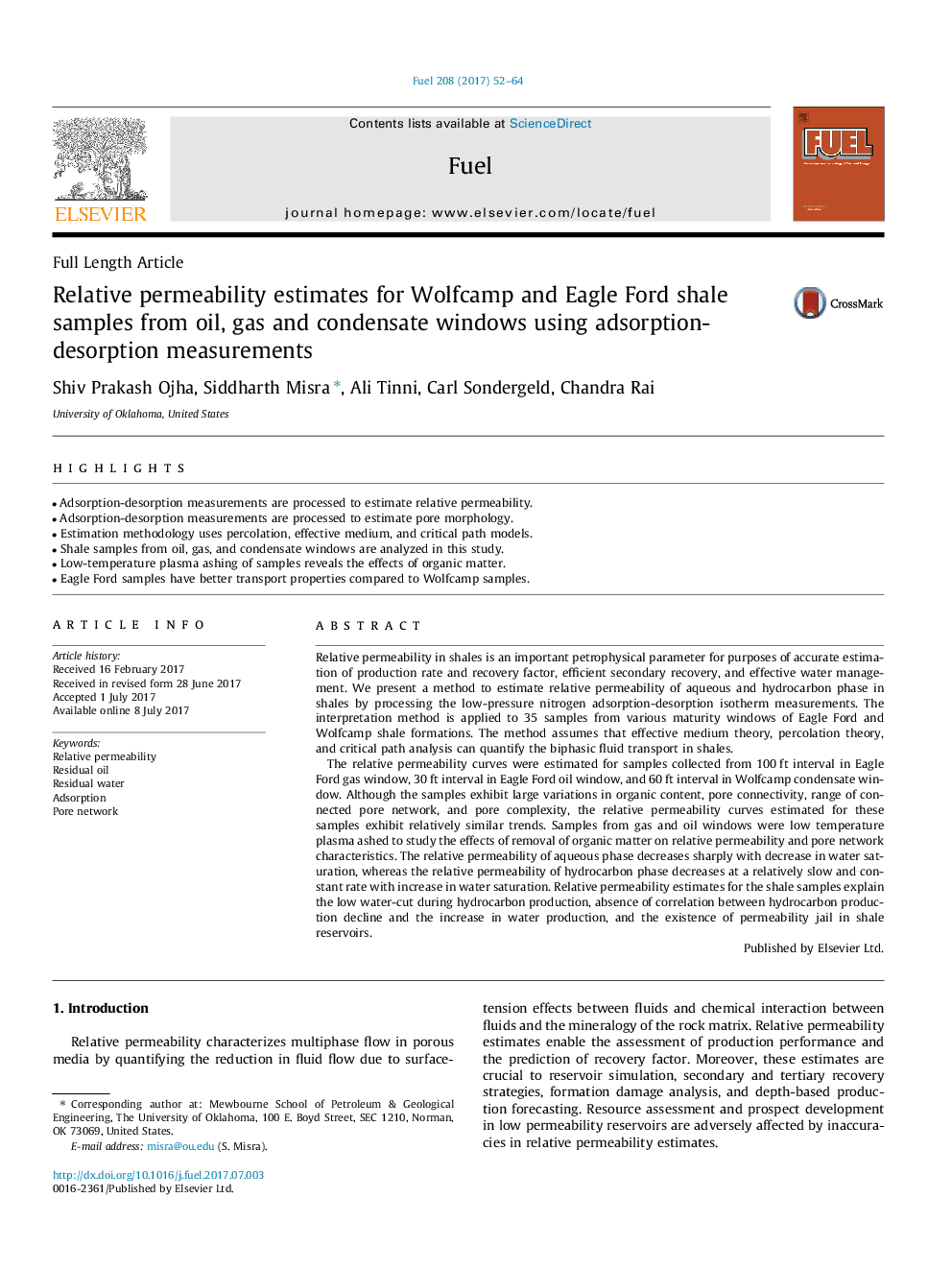| کد مقاله | کد نشریه | سال انتشار | مقاله انگلیسی | نسخه تمام متن |
|---|---|---|---|---|
| 6474053 | 1424956 | 2017 | 13 صفحه PDF | دانلود رایگان |

- Adsorption-desorption measurements are processed to estimate relative permeability.
- Adsorption-desorption measurements are processed to estimate pore morphology.
- Estimation methodology uses percolation, effective medium, and critical path models.
- Shale samples from oil, gas, and condensate windows are analyzed in this study.
- Low-temperature plasma ashing of samples reveals the effects of organic matter.
- Eagle Ford samples have better transport properties compared to Wolfcamp samples.
Relative permeability in shales is an important petrophysical parameter for purposes of accurate estimation of production rate and recovery factor, efficient secondary recovery, and effective water management. We present a method to estimate relative permeability of aqueous and hydrocarbon phase in shales by processing the low-pressure nitrogen adsorption-desorption isotherm measurements. The interpretation method is applied to 35 samples from various maturity windows of Eagle Ford and Wolfcamp shale formations. The method assumes that effective medium theory, percolation theory, and critical path analysis can quantify the biphasic fluid transport in shales.The relative permeability curves were estimated for samples collected from 100Â ft interval in Eagle Ford gas window, 30Â ft interval in Eagle Ford oil window, and 60Â ft interval in Wolfcamp condensate window. Although the samples exhibit large variations in organic content, pore connectivity, range of connected pore network, and pore complexity, the relative permeability curves estimated for these samples exhibit relatively similar trends. Samples from gas and oil windows were low temperature plasma ashed to study the effects of removal of organic matter on relative permeability and pore network characteristics. The relative permeability of aqueous phase decreases sharply with decrease in water saturation, whereas the relative permeability of hydrocarbon phase decreases at a relatively slow and constant rate with increase in water saturation. Relative permeability estimates for the shale samples explain the low water-cut during hydrocarbon production, absence of correlation between hydrocarbon production decline and the increase in water production, and the existence of permeability jail in shale reservoirs.
Journal: Fuel - Volume 208, 15 November 2017, Pages 52-64